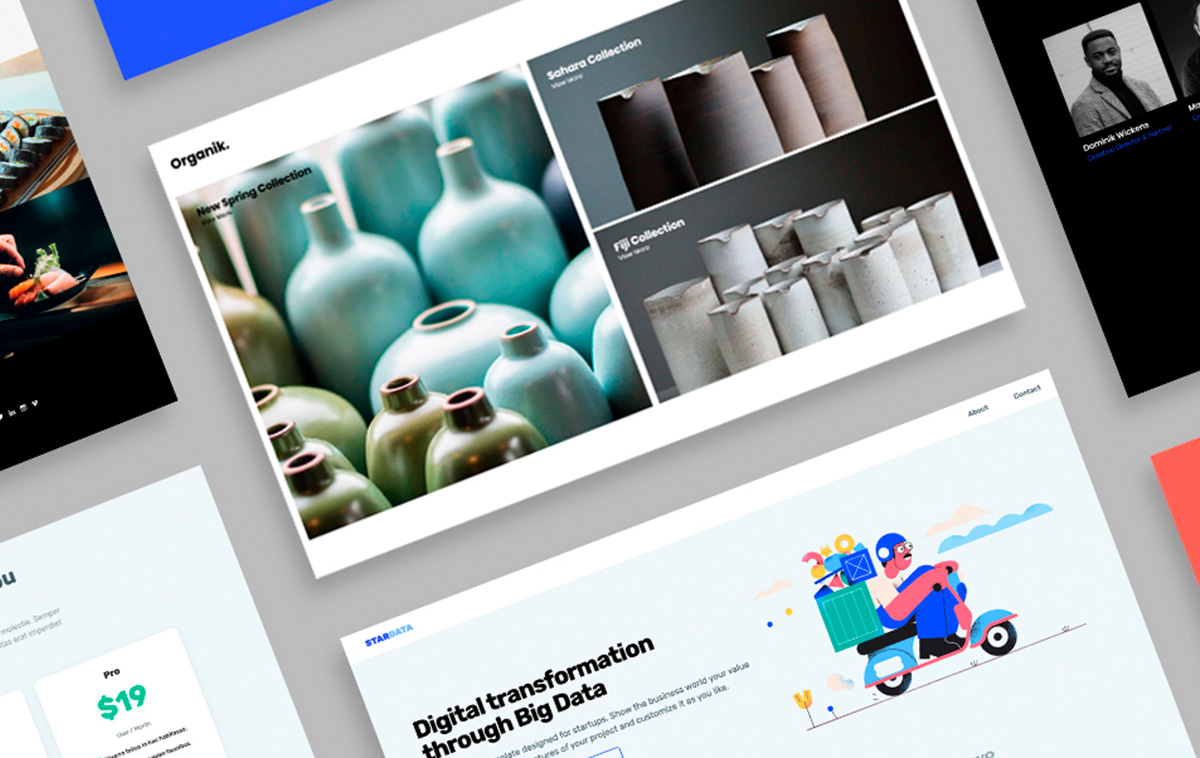Aligned Position Web Design: Delivering High-Quality, User-Friendly Web Designs for Every Industry
Aligned Position Web Design: Delivering High-Quality, User-Friendly Web Designs for Every Industry
Blog Article
The Best Kinds of Website Design to Improve Customer Experience and Interaction
In the ever-evolving landscape of digital interaction, the performance of Web layout substantially impacts individual experience and engagement. Numerous design methods, such as minimal, responsive, and interactive designs, each offer distinct advantages that can cater to diverse individual needs.
Minimalist Website Design
As digital landscapes come to be progressively chaotic, minimalist Web layout has actually arised as a powerful technique to enhancing user experience. This style philosophy focuses on simplicity, concentrating on necessary aspects while eliminating unnecessary diversions. By using sufficient white room, uncomplicated navigating, and a limited color palette, minimalist style fosters clearness and directs individual attention to key web content.
The core principle of minimalist Web design is to develop a seamless interaction for users. By lowering cognitive tons, users can promptly comprehend information without really feeling overwhelmed. This straight technique not only boosts functionality but additionally motivates involvement, as visitors are more most likely to explore a website that is easy and aesthetically appealing to browse.
Furthermore, minimal design often highlights typography and images, using these components tactically to share messages efficiently. This concentrate on vital parts can enhance brand name identity and develop a memorable user experience. Basically, minimal Web layout is not simply a pattern; it is a thoughtful methodology that recognizes the importance of user-centered layout. By removing extraneous elements, designers can produce a much more interesting, reliable, and enjoyable Web experience for all users.
Receptive Web Layout
In today's varied electronic atmosphere, receptive website design has come to be important for producing a smooth individual experience throughout a wide range of gadgets. As users accessibility websites on mobile phones, tablet computers, laptops, and desktops, the capability of a site to adjust its layout and content to various screen sizes and resolutions is crucial.
Responsive website design uses adaptable grids, pictures, and CSS media queries to guarantee that Web content exists efficiently, despite the device utilized. This approach not only enhances the visual allure of a site however likewise dramatically boosts functionality. Users are more probable to involve with a site that supplies a constant experience, as it gets rid of the frustration of having to focus or scroll exceedingly.
By taking on receptive layout, businesses can enhance their visibility and get to a broader audience. In summary, receptive Web layout is an essential technique that boosts individual experience, involvement, and overall contentment.
Interactive Website Design
Receptive website design lays the groundwork for enhancing user experience, however interactive Web layout takes this an action even more by involving customers in an extra vibrant means - Aligned Position Web Design. By integrating components such as animations, clickable models, and real-time feedback, interactive website design mesmerizes users, drawing them right into a richer browsing experience
This approach not only promotes interaction yet also motivates users to explore material website here actively instead than passively eating it. Methods such as gamification, where customers gain benefits for completing jobs, can substantially enhance the moment invested on a website and improve general complete satisfaction. In addition, interactive features can streamline complex info, making it extra absorbable and satisfying.

Integrating have a peek at this site interactive layout aspects can also cause higher conversion prices, as individuals are more most likely to involve with a website that proactively includes them. Aligned Position Web Design. Eventually, interactive Web design changes individual experiences into remarkable trips, guaranteeing that visitors return time after time
Flat Design
Characterized by its minimalistic strategy, flat design stresses simpleness and performance, removing unnecessary components and concentrating on vital functions. This design philosophy prioritizes use, making certain that customers can navigate interfaces effortlessly and effectiveness. By utilizing a tidy visual, level style removes the clutter typically found in much more luxuriant designs, consequently boosting customer concentrate on web content and performance.
The trademark of level style lies in its use of bold shades, basic typography, and geometric forms. These aspects contribute to a visually enticing user interface that is both modern and friendly. In addition, level layout cultivates a sense of quality, enabling users to determine essential activities and details without distraction.
In addition, level design is specifically efficient in responsive Web layout, as its simplicity equates well across various gadgets and display dimensions. By focusing on necessary attributes, flat design not only fulfills individual needs but also urges seamless interaction, making it an essential element of efficient Web layout techniques.
Flexible Website Design
Flexible website design personalizes the user experience by creating numerous taken care of layouts customized to different display sizes and gadgets. Unlike receptive design, which fluidly adjusts a solitary design, flexible layout uses distinct formats for particular breakpoints, making sure optimum presentation on different platforms. This method enables developers to concentrate on the one-of-a-kind qualities of each tool, improving functionality by delivering exactly what customers require based on their context.
Among the main advantages of adaptive website design is its capacity to enhance lots times and efficiency. By offering customized web content and photos that fit the user's gadget, web sites can decrease data usage and improve loading speeds. This is specifically advantageous for users with slower links or restricted data strategies.

In addition, flexible style promotes a much more constant and regulated branding experience. Since developers create multiple layouts, they can guarantee that the visual elements straighten with the brand name's read what he said identity across various platforms - Aligned Position Web Design. This results in a natural individual experience, boosting interaction and advertising individual retention
Final Thought
To conclude, the combination of minimal, receptive, and interactive Web layout concepts substantially enhances customer experience and involvement. Minimal style cultivates quality and focus, while responsive layout makes sure flexibility throughout various tools, promoting availability. Interactive design captivates users with vibrant components, motivating expedition and personalization. Collectively, these style approaches contribute to the development of straightforward settings that not just improve contentment but also drive greater conversion prices, emphasizing their crucial value in contemporary website design strategies.
.png)
Minimalist style promotes clearness and emphasis, while receptive style makes certain flexibility throughout numerous tools, advertising accessibility. Collectively, these design comes close to add to the production of user-friendly environments that not just boost satisfaction but additionally drive greater conversion prices, emphasizing their essential significance in modern Web design methods.
Report this page